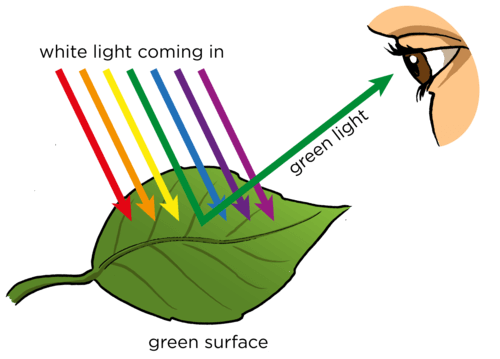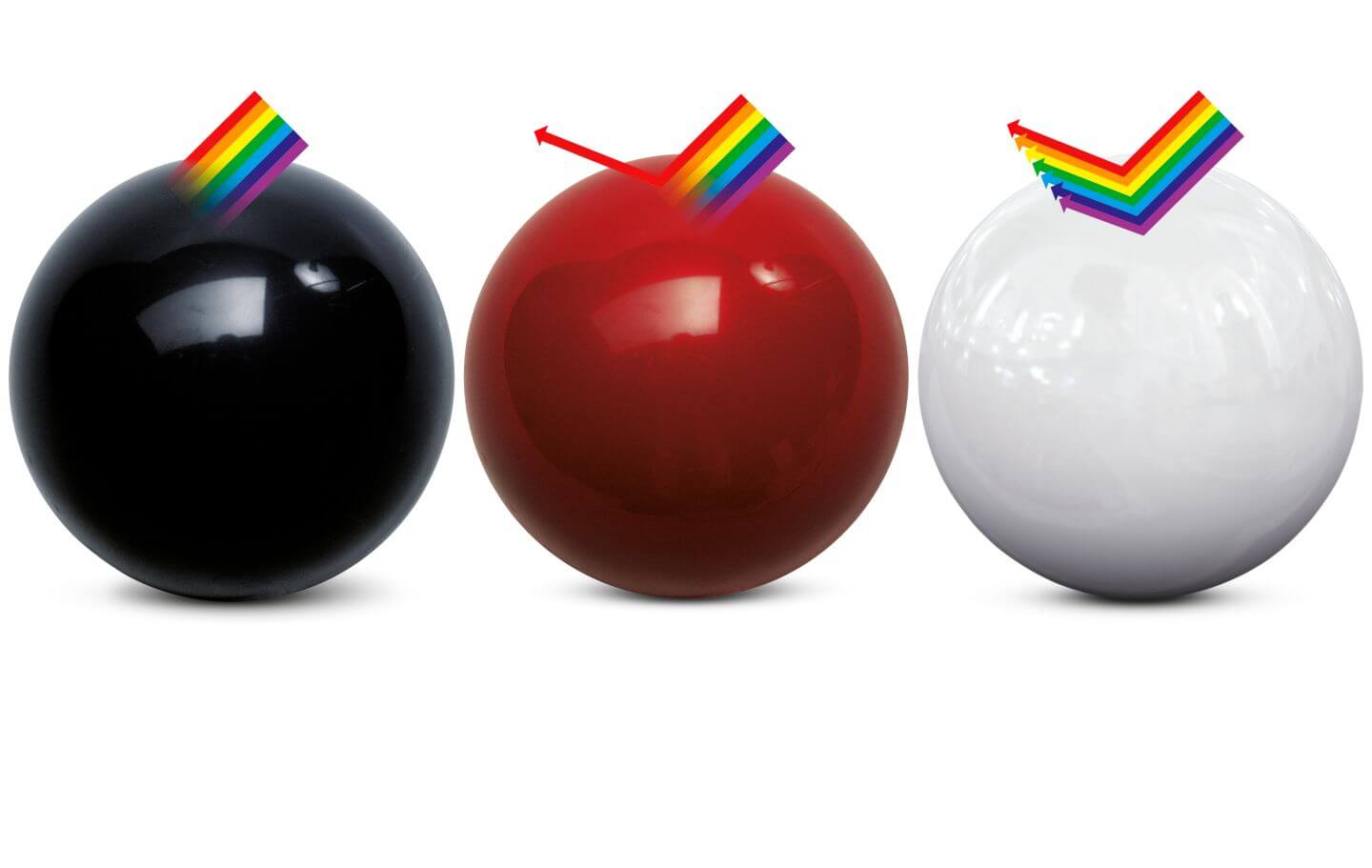We have already discussed that the white light is a mixture of seven different colors. When this white light consisting of seven colors falls on an object, then that object absorbs all the colors of the white light except one colour, which it reflects. And it is the colour of the reflected light which determines the colour of that object. For example, a rose (or blood) appears red in sunlight because when white light falls on rose (or blood), it absorbs all the colors of white light except red colour, which it reflects. This reflected red light by rose (or blood) enters our eyes and we feel the sensation of red colour. In the same way the leaves of plants appear green in sunlight because when white light falls on leaves, they reflects green colour to our eyes and absorbs all other colors. This reflected green light enters our eyes and we feel the sensation of green colour.

However, it is also observed that some objects absorb or reflect all the colors of white light which falls over them. If all the colors of white light are absorbed by an object, without reflecting any colour then such object appears black. For example, a black board appears black, because it absorbs all the colors of light falling on it. On the other hand, if all the colors of white light are reflected by an object without absorbing any colour then such object appears white. For example, the milk appears white because it reflects all the colour of white light falling on it.

Test Your Understanding and Answer These Questions:
- Why do a rose appear red in color?
- Why do leaves of plants appear green?
- When does a body appear black?
- When does a body appear white?
- Why does milk appear white?
